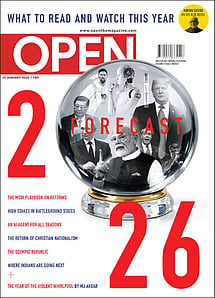The Brain Gain

THE RECENT POLICY change of the US administration on H-1B visas— increasing the fee to $100,000—raises questions about the theory of globalisation neoliberal scholars emphasised till a few years ago. The relationship between migration and the making of a new world is in crisis. While the developmental needs of a society require the best brains and an effective workforce, the process of globalisation is creating 'scared states'. Such scared states need the best brains and labour but sections of the public in those societies are afraid of the ideas and intellect of immigrant workers. This growing fear is pushing governments to impose restrictions on the global movement of ideas and skills.
Keen observers of South Asia see these developments as an opportunity in a time of crisis. A reverse brain drain could be technologically helpful for the countries of origin of migrant workers. Prime Minister Narendra Modi had factored in such a phenomenon in future and had started pushing the discourse of self-reliance as well as framing policy to develop a flexible technosphere which could engage the brains and skills returning to India.
Modi's Make in India policy—promoting startups, creating a healthy environment for MSMEs, etc—is meant to minimise the negative impact of such a process of de-globalisation. Such spheres could develop as vibrant spaces of innovation involving the returning workforce. A situation in which the US is scared of skilled immigrants might hasten the process of reverse migration to South Asia, especially to a country like India which has produced some of the best technical minds and skilled hands in the last few decades. It's possible that many of these skilled Indians would first explore avenues in Europe—in countries like the UK, Germany, France, Switzerland, etc. But a large section is likely to return to India and settle in cosmopolitan cities like Bengaluru, Mumbai, Noida, and Gurugram.
2026 Forecast
09 Jan 2026 - Vol 04 | Issue 53
What to read and watch this year
Teaching at European universities recently, I observed that many European intellectuals are looking at India with hope. Europe, some of them say, is saturated already and the US is on the verge of saturation. Their resources are getting depleted and they have no new developmental vision. Their ideas have lost freshness. They see that India has the capacity to reinvent itself. It has both history and a future. History provides India the capacity to imagine and a frame of values which inculcates creativity. A professor in Switzerland said India has democratic politics and Modi has a long-term vision. Modi has planned for future goals and sees the future as a mission for national development. Besides, India's energetic youth, who make up the country's demographic dividend, could anchor its reinvention. Some intellectuals in Paris wondered if India was going to reinvent itself along European or American lines, which are already in crisis, or find an Indian-Asian way that will have the possibility of innovation and an alternative developmental imagination.
If India is in the process of reinventing itself, these skilled workers returning from the West may become the binding thread of the country's texture of development. India and China both have tremendous potential to build alternative paths of human progress which could lead us away from the European or American models of development which anyway face their own existential crises.
Tariffs or H-1B visas are merely reflections of how scared the US is. And these could end up providing space for India's emergence as a world power. As the professor in Switzerland said, Westerners shouldn't be afraid of India's rise because India was a world power once and might just regain that status.
